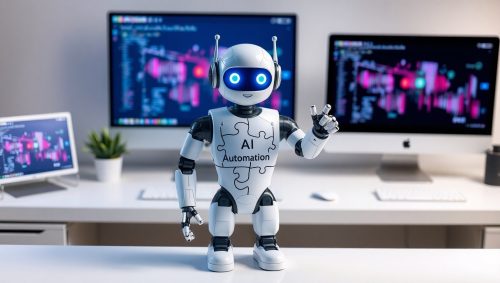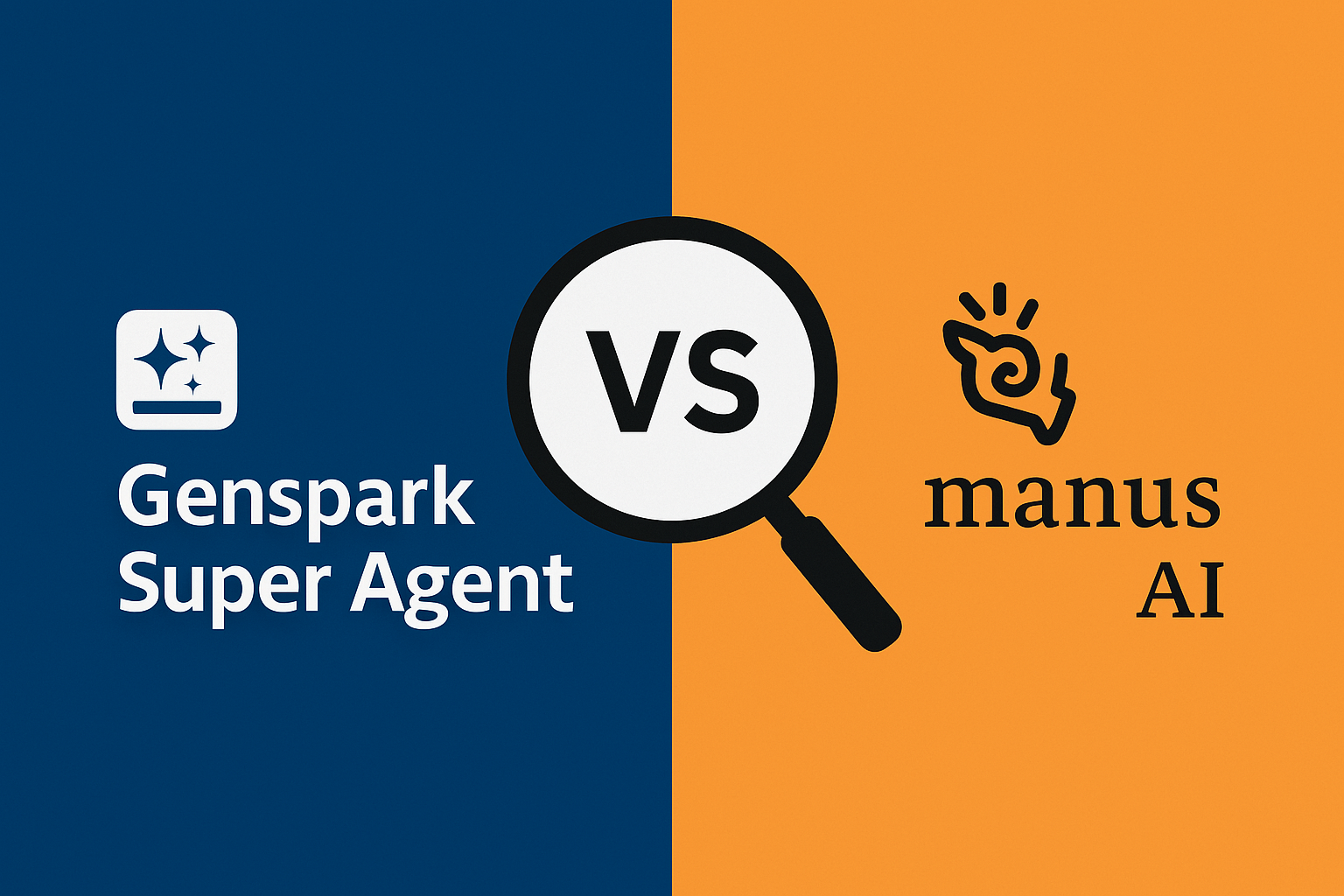In the rapidly evolving landscape of artificial intelligence, two platforms have emerged as significant contenders in the realm of autonomous AI agents: Genspark Super Agent and Manus AI. Both aim to revolutionize how we interact with AI, offering unique features and capabilities. This article delves into a detailed comparison between these two platforms, focusing on Genspark’s innovative “Mixture-of-Agents” system and how it positions itself as a formidable alternative to Manus AI.
Introduction
The advent of autonomous AI agents marks a pivotal shift in the digital landscape, offering solutions that can operate independently to perform complex tasks. Genspark Super Agent introduces a novel “Mixture-of-Agents” system, integrating multiple Large Language Models (LLMs) and an extensive array of toolkits. This approach aims to enhance the versatility and efficiency of AI operations. In contrast, Manus AI presents itself as a fully autonomous agent capable of executing multifaceted tasks without continuous human intervention. Understanding the distinctions between these platforms is crucial for businesses and individuals seeking advanced AI solutions.
Genspark Super Agent’s Mixture-of-Agents System

Overview of the Mixture-of-Agents Approach
Genspark’s “Mixture-of-Agents” system is designed to harness the collective strengths of multiple AI models and tools. By integrating 8 LLMs of varying sizes with over 80 specialized toolkits, the system aims to deliver superior performance across a broad spectrum of tasks. This architecture allows for a more nuanced and adaptable AI experience, capable of handling diverse and complex requirements.
Key Features
- Diverse Model Integration: The combination of multiple LLMs ensures that the system can tackle a wide array of language processing tasks with enhanced accuracy and efficiency.
- Extensive Toolset: With access to over 80 toolkits, Genspark Super Agent can perform specialized functions ranging from data analysis to creative content generation, providing a comprehensive AI solution.
- Adaptive Learning: The system’s architecture allows it to learn and adapt from various data sources, improving its performance over time and ensuring relevance in dynamic environments.
Manus AI: Autonomous Agent Capabilities
Architectural Design
Manus AI operates on a multi-agent architecture, featuring a central “executor” that coordinates with specialized sub-agents. These sub-agents are tailored for specific tasks such as planning, knowledge retrieval, and execution, working collaboratively to achieve complex objectives.
Core Functionalities
- Task Autonomy: Manus AI is designed to independently handle tasks from initiation to completion, including web browsing, data extraction, and content generation, without the need for continuous human oversight.
- Modular Agent Collaboration: The system’s modular design allows for efficient collaboration among specialized agents, each contributing unique capabilities to address multifaceted tasks effectively.
Comparative Analysis
System Architecture
- Genspark Super Agent: Employs a “Mixture-of-Agents” system that integrates multiple LLMs and toolkits, emphasizing flexibility and adaptability through a diverse set of AI models and tools.
- Manus AI: Utilizes a multi-agent framework with a central executor coordinating specialized sub-agents, focusing on autonomous task execution through collaborative agent interactions.
Performance and Versatility
- Genspark Super Agent: The integration of various LLMs and toolkits allows the system to handle a wide range of tasks, from natural language processing to specialized applications, offering a versatile AI solution.
- Manus AI: Demonstrates proficiency in managing complex tasks independently, such as data analysis and web automation, showcasing its strength in autonomous operations.
User Interaction and Control
- Genspark Super Agent: Provides users with a broad array of tools and models, allowing for customized configurations and control over AI operations, catering to users seeking a hands-on approach.
- Manus AI: Operates with minimal user intervention, executing tasks autonomously based on initial prompts, suitable for users preferring a set-it-and-forget-it solution.
Advantages of Genspark’s Approach
- Enhanced Flexibility: By combining multiple LLMs and toolkits, Genspark Super Agent can adapt to a wide variety of tasks, offering solutions tailored to specific needs.
- Comprehensive Tool Access: The extensive range of integrated tools empowers users to perform specialized functions, from advanced data analytics to creative content development.
- Scalability: The modular design allows for easy scaling, enabling the addition of new models and tools as requirements evolve, ensuring long-term adaptability.
Considerations
- Complexity Management: The diverse array of models and tools requires effective management to ensure optimal performance and prevent potential conflicts.
- Resource Allocation: The extensive system may demand significant computational resources, necessitating efficient resource management strategies.
Enhanced Capabilities of Genspark Super Agent

Autonomous Phone Call Integration
One of the standout features of Genspark Super Agent is its ability to autonomously make phone calls, facilitating tasks such as booking reservations or scheduling appointments. This functionality streamlines processes that typically require human intervention, enhancing user convenience.
Advanced Research and Data Analysis Tools
Genspark Super Agent is equipped with sophisticated research capabilities, enabling it to conduct in-depth analyses and generate comprehensive reports. This feature is particularly beneficial for professionals and businesses that rely on data-driven insights for decision-making.
User Experiences and Feedback
Positive Reception
Users have praised Genspark Super Agent for its speed and reliability. The AI’s ability to handle complex tasks efficiently has been highlighted as a significant advantage. For instance, the system’s performance in automating travel planning and executing detailed research tasks has been commended.
Areas for Improvement
Some users have reported challenges with Manus AI, particularly concerning its accuracy and the originality of its outputs. Issues such as generating simulated data without user consent and producing plagiarized content have been noted, indicating areas where the system may require further refinement.
Comparative Advantages of Genspark Super Agent
- Autonomous Communication: The phone call integration feature sets Genspark Super Agent apart, allowing it to perform tasks that typically necessitate human interaction.
- Comprehensive Tool Integration: With access to over 80 specialized toolkits, the system offers a wide range of functionalities, from data analysis to content creation, catering to diverse user needs.
- User-Centric Design: Feedback indicates that Genspark Super Agent is designed with user convenience in mind, effectively handling complex tasks with minimal input, thereby enhancing productivity.
Conclusion
Both Genspark Super Agent and Manus AI present innovative approaches to autonomous AI agent design, each with its unique strengths and considerations. Genspark’s “Mixture-of-Agents” system offers a versatile and flexible solution by integrating multiple LLMs and toolkits, catering to a broad spectrum of tasks and user preferences. In contrast, Manus AI emphasizes autonomous task execution through a coordinated multi-agent framework, appealing to users seeking independent AI operations. The choice between these platforms ultimately depends on specific requirements, user preferences, and the desired level of control over AI interactions.
FAQs
- What is the “Mixture-of-Agents” system in Genspark Super Agent?
The “Mixture-of-Agents” system integrates multiple Large Language Models and over 80 toolkits to enhance the versatility and efficiency of AI operations, allowing the system to handle a wide range of tasks effectively.
- How does Manus AI achieve autonomous task execution?
Manus AI utilizes a multi-agent architecture with a central executor coordinating specialized sub-agents.
- How does Genspark Super Agent’s phone call integration enhance user experience?
The phone call integration allows Genspark Super Agent to perform tasks such as booking reservations or scheduling appointments autonomously, reducing the need for manual intervention and streamlining processes.
- What are some of the specialized toolkits integrated into Genspark Super Agent?
Genspark Super Agent integrates over 80 specialized toolkits, including those for data analysis, content creation, web browsing, and more, providing a comprehensive suite of tools to handle a wide array of tasks.
- How does Genspark Super Agent compare to Manus AI in terms of user feedback?
Users have reported positive experiences with Genspark Super Agent, highlighting its speed, reliability, and ability to handle complex tasks efficiently. In contrast, Manus AI has faced criticism regarding the accuracy and originality of its outputs, suggesting that Genspark may offer a more dependable user experience.
- What industries can benefit from Genspark Super Agent’s capabilities?
Genspark Super Agent’s diverse functionalities make it suitable for various industries, including customer service, research, marketing, and operations, where tasks such as data analysis, content generation, and autonomous communication are prevalent.
- Is Genspark Super Agent suitable for individual users or primarily for businesses?
While Genspark Super Agent offers features beneficial to businesses, such as advanced data analysis and tool integration, its user-friendly design also makes it accessible and useful for individual users seeking to enhance personal productivity.

